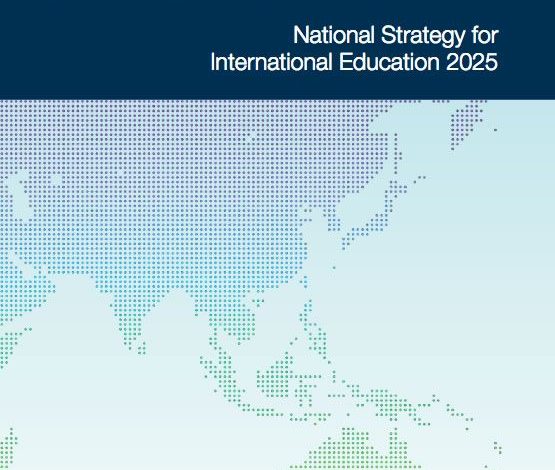In spite of the fact that different nations are at different stages of COVID-19 infection rates, there are currently more than billions of learners in 186 countries who are affected by face-to-face classroom closures as a result of the epidemic. This is one of the reasons why we decided to create a few articles to provide assistance to the industry, training organisations, and students.
In order to be successful in teaching online, training organisations must create and deliver courses that are engaging, interactive, effectively supported, and sensitive to the needs of today’s students.
Students will continue to look to you for direction and guidance even if they are learning from home.
Effective online learning
Effective online learning does not only follow the traditional model of uploading materials to a learning management system such as Moodle, but also incorporates a number of interactive ways to engage students, enable and equip them to perform the activities in a simulated environment, provide them with real-life situations and scenarios, and ensure regular interactions with the instructor and other students. In the event that a trainer is not accessible, the student should interact with the learning management system instead.
Suggestions for improving the effectiveness of e-learning..
Here are some good recommendations for making e-learning even more effective:
Provide instructions that are quite specific and clear.
You must present your students with clear directions at all times. It is critical to use clear legends and icons when creating a course for an online learning module. You must also maintain consistency. It should be absolutely clear to students what they need to read, research, observe, participate/do and write about in order to effectively complete a course. No guessing game is appropriate for online learning, especially when students are interacting directly with a machine, not a human being.
Design layout for the online course
What kind of design layout do you employ? When it comes to getting learners to participate in your courses, course design is really important. It should be straightforward, efficient, and engaging. Make it easy for students to move from one course to another or from one link to another without complications.
If you do not have in-house expertise in designing online learning courses, make it crystal clear in what qualities and characteristics you are looking for if you are recruiting. When it comes to an interview, what are the most important things that developers must demonstrate in terms of knowledge and skills, explain everything in as clear and succinct a manner as you can.
Make the courses engaging and interesting
Students’ inability to concentrate on uninteresting and unengaging content is a primary cause for their failure to succeed in online courses. As a result of the current healthcare crisis, this problem has been further compounded further. The inability to retain concentration manifests itself in a variety of ways for different people. Many students find it difficult to concentrate, prioritise, organise their time, and remain on track when they do not have the structure of a typical training day to follow, which is why many students choose to study in face-to-face classrooms rather than online. Fortunately, there are a number of solutions. In the first place, it is vital that students are provided with an organisational framework that will enable them to be effective. Second, the content that is made available to them should be entertaining, interactive, and designed with a high level of professionalism.
Facilitate a process by which students engage with one another
The students must communicate in a manner that is similar to the manner in which they are accustomed to receiving face-to-face education. Making smaller groups of students out of a large group of students can help to enhance interaction, communication, and the development of interpersonal relationships. Initiate conversations with students about participating in icebreaker activities while they are in smaller breakout groups. The breakout sessions, which can be held during the online meetings, after class sessions, or during class sessions, provide an additional opportunity for students to express themselves and share their skills and experience with one another.
Individual learning plans should be developed.
Because every student’s situation is unique, your expectations must be tailored to each individual student’s existing capabilities. Personalise students’ education by developing customised learning plans that allow you to tailor your instruction and expectations to their specific needs and skills. This is especially true for students who have learning difficulties, who may find it challenging to learn in a distance-learning environment.
Make it social
Sharing and commenting on information are examples of social features that most of us are accustomed to doing in our everyday communication. When used in conjunction with gamification, this increases the interactivity of any course. It’s also a lot of fun for the students to participate.
Invite students to contribute to the learning.
Another method of empowering learners is to have them share their expertise by creating materials or holding online group study sessions. Students who engage in task-based learning can produce a genuine, relevant output that can be shared with other students who are at an earlier stage in their learning journey to motivate them and assist them with their studies. Task-based learning is becoming increasingly popular.
Encourage the use of peer evaluation.
A tried-and-true classroom strategy that also works wonders online. Providing learners with the opportunity to assess each other’s work helps them to better comprehend what they are doing and promotes a culture of sharing, which can be beneficial in disseminating best practice.
E-learning content is very different from face to face content
It is possible that your course content will appear uninteresting and unengaging to your students if you do not present them with choices to participate through videos, audios, images, video conferencing tools, emoticons, or other means of online communication.
The ability to concentrate when working online gradually deteriorates, especially when the distractions of social media are readily available. Student requirements for online content are generally higher than those for face-to-face education, and this must be acknowledged.
Interesting and engaging conversations
Take care to ensure that any conversations that students have are actually valuable to their learning. This can be done verbally, in a breakout session, or online using chat or a discussion forum.
Seek stakeholders feedback for continuous improvement
Solicit input from all stakeholders in order to ensure that the quality of the online training materials is continually improved. It is possible to sustain the interest of students, who are one of the most important stakeholders, by soliciting and acting on their feedback, which also helps them feel more connected to the online course and your training organisation in general. When it comes to receiving constructive feedback to students, using efficient online feedback tools such as Google forms, plickers, kahoot, socrative, GoSoapBox, Quizalize, Formative, Poll everywhere, Micropoll, Zoho survey, Survey Monkey, Typeform, SurveyNuts, SurveyPlanet, PollMaker etc. can be extremely beneficial. A variety of other tools can be used to provide constructive feedback to students in addition to the ones listed above such as Audacity (for audio feedback), Jing (the video feedback platform), Kalzena etc. Maintaining genuine connections with students and other stakeholders means keeping feedback as constructive as possible while also remaining approachable.
Constructive and ongoing review of student’s participation
Responses are required for tasks that necessitate participation in a debate or forum. The motivation for giving up can come from teachers or other classmates. Students will frequently give up if they perceive that no one is reading or watching what they are writing, reading, speaking or doing.
Time management tools
Checklists assist students in organising their thoughts as well as the time they have available to complete their learning modules, formative or summative assessments.
Stay away from gimmicky tools that aren’t worth your time. Keep your attention on the teaching and learning process rather than on the bells and whistles, and you’ll be just fine. There are a wealth of great materials readily available, and there is no need to recreate the wheel if you can find something available online that you can use for training your students.
Give students research activities
Provide research tasks that have been pre-planned and critically evaluated in advance. The internet may be a complicated and intimidating world if you don’t know where to look. Project-based learning offers a wide range of alternatives for customisation, and there are many of them.
Self-assessment and reflection activities
Self-assessment and reflection should be made available to students at all levels of education.
Be available to support your students
It is acceptable to say that online learning can be difficult at times. Create a situation where you are available to assist others when they require it. The phrase “remote” does not necessarily imply the idea of being “on your own.”
Offer students choices for learning and submitting the work
It is important that students be given the opportunity to exhibit their work in a variety of mediums.
What is the learners’ perception of the learning environment?
The perceived relevance of the course to a student is almost certainly the single most essential aspect in motivating them to engage in and complete the course, and this perception is required for optimal learning. The importance of describing the usability, value, and relevance of the course from the beginning of each course session cannot be overstated. Make it clear to your students how your course serves as a prerequisite for more advanced courses, how it will aid them in the acquisition of specific abilities, or how it addresses topics that the students find particularly interesting.
Focus on equity and accessibility
The expansion of online learning has exacerbated the problems of equity and accessibility that have long plagued the VET and higher education. Despite the fact that people may have access to technology, not everyone has reliable high-speed Internet connections or a distraction-free study place. Be aware of the obstacles that students may encounter, keeping in mind that students’ degrees of comfort with online learning can vary greatly, and that some students may be located in different time zones than others. The suspicion that their classmates are cheating is widespread among students, and with good reason. As a result of the current political climate, our students are experiencing a wide range of issues. Some students require academic aid, while others require technology assistance to complete their assignments. Many, possibly the majority, of students require non-academic support services. Many people’s mental health requirements are not being provided in a satisfactory manner. Another group of people requires support in keeping a good balance between their various responsibilities and priorities. It is possible to reach out to students in a proactive manner or to send notifications if there is evidence that they are falling behind in their studies. You have the ability to send out alerts to your students, to provide them with support, and to accomplish excellent outcomes. All you have to do is investigate and discover the legally permissible methods of accomplishing your goals.
Show empathy with your students
The importance of empathy has never been greater than it is right now. Encourage your students to try their best in all they do. Using scaffolding, such as rubrics, check lists, sample responses to test questions, background material, glossaries, and so on, students can better structure their learning and achieve greater success. Consider giving yourself some wiggle room when it comes to deadlines and the ability to redo assignments.
Prepare for the future
There is little indication that things will return to normal in the near future and we must assume that a large component of VET and higher education will continue to be given online for the foreseeable future. However, we have a professional and moral obligation to ensure that students learn just as much as they would have in the time prior to the pandemic. Take the initiative and meet the challenge head-on.
Tools, techniques and technologies for e-learning
Let’s discuss some of the tools, techniques and technologies that you can use for e-learning:
- Frequent announcements: It may seem obvious, but giving students with a regular announcement about what is occuring in the topic (and the world) – aim to do so regularly – helps them feel more connected and a sense of belonging.
- Prepare a brief weekly video announcement, such as the following: Explain the week’s goals and objectives, how this ties to past learning and subject outcomes, and any advise you have for students on assessment progress (for example, “By this time, you should have finished your peer feedback”).
- Establish online discussions in your learning management system (LMS) and ensure that you participate in them. This is similar to what you would do in a traditional classroom setting. Encouragement, adjusting assumptions, and remembering to mention and emphasise accomplishment are all important!
- Establish “Virtual Office Hours,” during which students are aware that you are available to reply to questions via email or discussion board.
- Set explicit expectations for how you want students to behave and engage with one another early on in your subject’s development. Also crucial is to demonstrate these behaviours and interactions yourself, such as being concise, being respectful, and fostering friendly discourse.
- You can use discussion boards to address subject-specific issues and also for more informal discussions such as introductory or general discussions.
- Bring about conversation by using direct questions, conflicts, cases, situations, and concerns or problems that are relevant to the subject matter.
- Make sure to participate in the discussion on a frequent basis and to acknowledge students when they make good remarks, give links to resources, or assist other students in the topic.
- Useful aspects that are found in other elements of your subject, such as in your digital lectures, announcements, or online tutorials, should be mentioned explicitly in your digital lectures.
- Allocate a minor percentage of the overall grade for participation in discussion forums.
In our upcoming newsletters, we will continue to explore the tools, techniques, and technologies that can be used to deliver quality training online.
CAQA Digital
Through our partner initiatives Online Media Solutions (OMS) and CAQA Digital, we can assist you with your e-learning requirements. Contact us at info@caqa.com.au for more information.


 Peter owns and operates Sydney based education law firm Denison Toyer.
Peter owns and operates Sydney based education law firm Denison Toyer.











